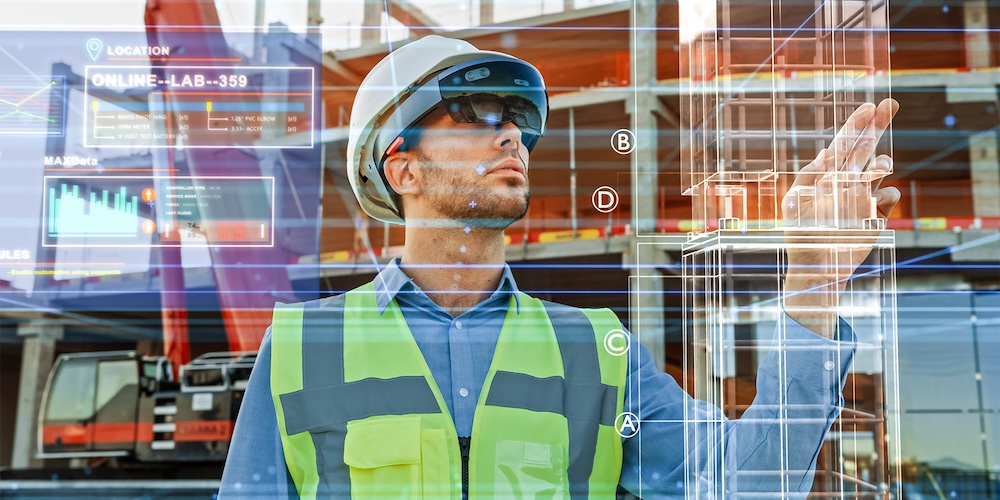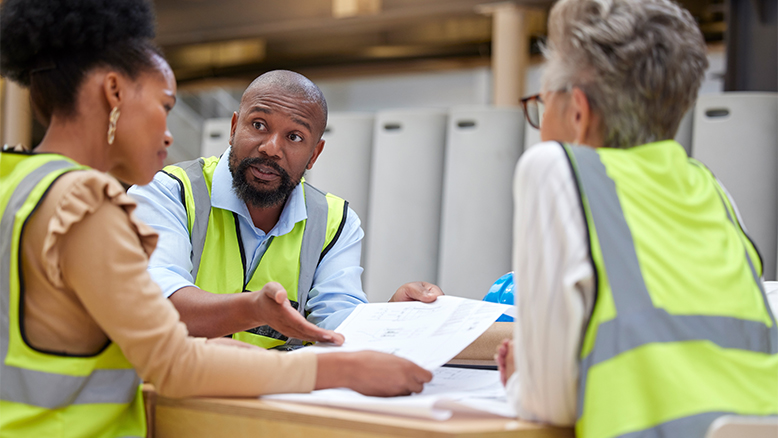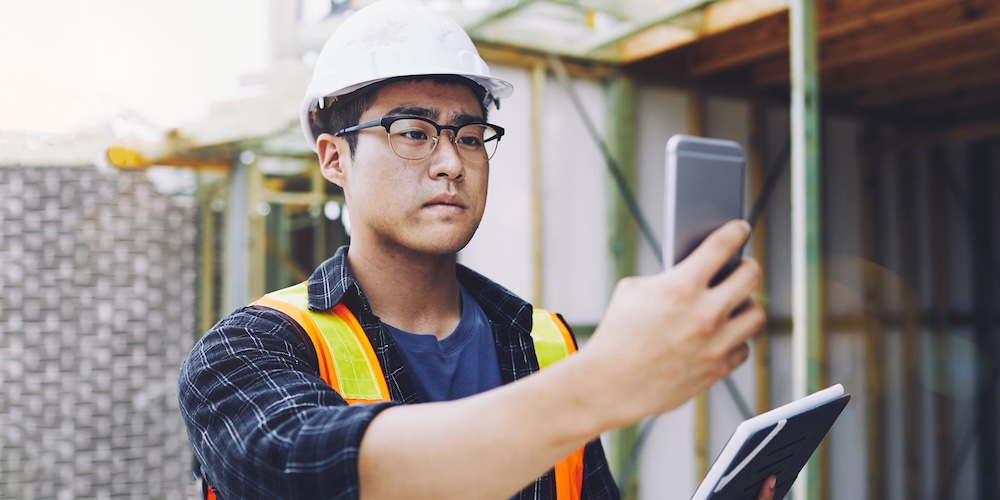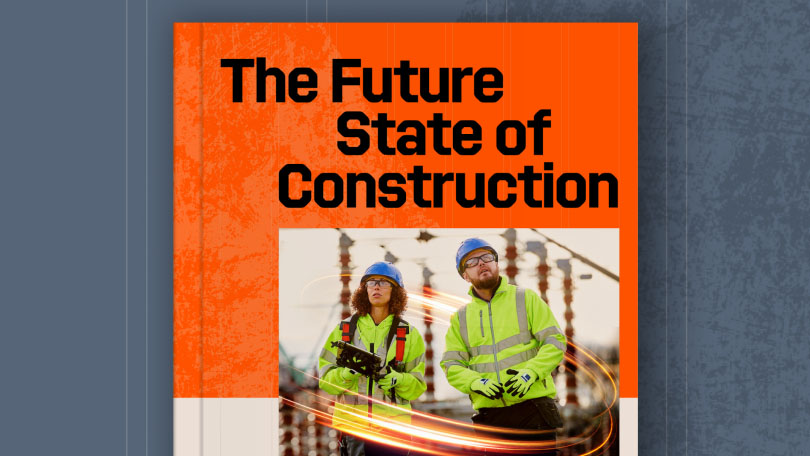— 6 min read
Construction Site Safety: Protecting Lives and Projects


Last Updated Aug 28, 2025

Nicholas Dunbar
Content Manager
62 articles
Nick Dunbar oversees the creation and management of UK and Ireland educational content at Procore. Previously, he worked as a sustainability writer at the Building Research Establishment and served as a sustainability consultant within the built environment sector. Nick holds degrees in industrial sustainability and environmental sciences and lives in Camden, London.

Zoe Mullan
27 articles
Zoe Mullan is an experienced content writer and editor with a background in marketing and communications in the e-learning sector. Zoe holds an MA in English Literature and History from the University of Glasgow and a PGDip in Journalism from the University of Strathclyde and lives in Northern Ireland.
Last Updated Aug 28, 2025

Construction sites hum with activity – machinery whirrs, deliveries arrive, and teams work tirelessly. However, with so many moving parts, safety cannot be an afterthought. From first dig to final sign-off, construction site safety protects workers, builds stakeholder confidence, keeps sites running smoothly, and prevents unexpected setbacks and disasters.
Table of contents
What Construction Site Safety Means
Construction site safety involves identifying and mitigating risks that could cause injuries, fatalities, or future health problems for workers, residents, and passersby. For construction companies prioritising ethical practices, site safety represents the most important aspect of any project. While adhering to legal regulations remains important, construction site safety primarily focuses on ensuring everyone goes home safe each day and protecting their long-term health.
Why Safety Drives Success
Given these stakes, the construction industry consistently ranks among the UK’s most high-risk sectors. Therefore, creating a safe working environment means recognising that every decision, tool, and process plays a part in keeping people protected. From ground-breaking to final closeout, contractors must create an environment where everyone stays protected – from workers to delivery drivers and the public.
Key principles that drive effective safety include:
Teams must spot potential risks early – for example, exposed rebar, unstable ground, or high-voltage cables. Early recognition helps teams act before incidents occur.
Risk Mitigation
Sites require practical controls to reduce or eliminate risk, such as edge protection, traffic management systems, or restricted zones, tailored to each site's unique challenges.
Shared Responsibility
Safety extends beyond one supervisor's role. It demands a collective effort where everyone – from site managers to subcontractors – remains accountable for themselves and others.
Learn about the future of the built environment - Read Procore's Future State of Construction report
Learn how contractors, subcontractors, and project teams can take advantage of new opportunities to boost efficiency and profitability over the next decade. Download the report to get your roadmap to the future state of construction.

Essential Safety Measures
A safe site results from clear rules and well-planned systems. While every project differs, certain safety measures apply universally. These non-negotiables protect workers, prevent costly delays, and maintain public trust:
Personal Protective Equipment (PPE)
At the most basic level, PPE remains one of the most effective lines of defence. Hard hats, safety glasses, gloves, high-visibility clothing, and steel-toe footwear must be mandatory, properly fitted, maintained, and worn at all times.
Organised Work Areas
A cluttered site is a dangerous site. Clear access routes, designated storage areas, and regular housekeeping routines reduce trip hazards, improve visibility, and support overall efficiency.
Training and Procedures
In addition to physical measures, under UK law, employers must provide training for every worker in their specific tasks – whether working at height, handling tools, or managing materials. Contractors are legally required to ensure workers remain competent, have appropriate training and experience, and are properly supervised. Toolbox talks, method statements, Construction Industry Training Board (CITB) training, and CSCS (Construction Skills Certificate Scheme) cards all help meet safety regulations.
Risk Assessments
Furthermore, safety forms the foundation of risk management, and every task should begin with a clear assessment of the hazards involved. Site-specific assessments – not generic templates – help teams identify hazards and agree on control measures before work begins.
Emergency Preparedness
Comprehensive plans must address every eventuality, from fires to medical incidents. This includes visible evacuation routes, accessible first-aid kits, trained responders, and clear communication channels when emergencies arise.
Open Communication
Meanwhile, an open culture around safety helps potential issues surface before they become incidents. Toolbox talks provide essential ongoing training and communication opportunities, while suggestion schemes reinforce site awareness.
Clear Site Rules
Additionally, teams must post and enforce clear site rules, such as smoking bans or PPE requirements, without exception. Setting upfront expectations and maintaining firm enforcement creates a safe working culture.
Public Safety
Beyond protecting workers, barriers, on site signage, and traffic-control systems protect passersby from falling objects, plant movement, and general site operations.
Active Supervision
Supervisors serve as the linchpin of jobsite safety. They set standards, check compliance, and ensure follow-through of every safety measure, from inductions to inspections.
Identifying Hazards
Finally, identifying the hazards specific to a project's jobsite helps teams implement targeted safety measures. The following section details common site hazards that require particular attention.
Common Site Hazards
On active sites, hazards form part of the landscape, but accidents should never be inevitable. The UK records numerous work-related fatal injuries every year. Recognising the most common risks is the first step to preventing them. Here are the dangers every site team needs to address:
Falls from Height
Falls remain the leading cause of fatal injuries in UK construction. Whether from scaffolding, ladders, or unprotected edges, working at height always requires planning, guardrails, fall-arrest systems, and constant supervision.
Slips, Trips, and Falls
Similarly, uneven ground, loose cables, poor lighting, or wet surfaces can easily cause falls. Good housekeeping, clear access routes, and proper footwear make all the difference.
Electrical Hazards
Overhead lines and faulty tools present ever-present electrical risks. Only qualified operatives should handle live systems, and all equipment requires regular inspection, PAT testing, and proper grounding.
Hazardous Substances
Another significant concern involves exposure to materials like asbestos, lead, silica dust, and solvents, which can all cause long-term harm. Materials should carry clear labels, teams must handle them under COSHH guidelines, and workers need appropriate PPE and training.
Moving Vehicles and Machinery
On a different note, forklifts, excavators, cranes, and site vehicles pose serious risks without proper management. Clearly marked routes, trained spotters, and designated exclusion zones help prevent collisions and protect ground workers.
Manual Handling
Physical strain injuries are frequent and costly site issues that cause lasting damage. Poor lifting techniques or inadequate preparation often cause these injuries. Where possible, teams should consider lifting aids while providing workers with clear guidance on assessing loads and using safe handling practices.
Noise Exposure
Lastly, long-term exposure to excessive noise harms hearing, but even short-term exposure causes fatigue and reduces concentration. Where teams cannot reduce noise levels at source, hearing protection and regular monitoring become essential.
Safety Responsibilities
Given the complexity of these hazards, creating a safe site requires shared effort, though responsibilities vary by role. Everyone on a construction project, from directors to site operatives, carries legal and moral duties to uphold health and safety standards. Understanding accountability prevents critical issues from falling through the cracks.
Site Managers and Supervisors
At the operational level, these professionals serve as frontline safety enforcers. They oversee daily operations, ensure risk assessments are completed, verify PPE compliance, and maintain safety protocols without exception. Additionally, they lead site inductions, conduct toolbox talks, and report incidents.
Contractors and Employers
From a legal standpoint, UK law requires employers to provide safe working environments, suitable training, and appropriate equipment for every task. This includes conducting risk assessments, consulting workers on health and safety matters, and ensuring everyone remains competent in their assigned tasks.
Workers and Operatives
At an individual level, every worker must take reasonable care of themselves and others. This means following site rules, using equipment properly, reporting hazards, and speaking up when something feels unsafe. Safety culture only succeeds when everyone participates.
Health and Safety Professionals
From a strategic perspective, whether in-house or external, health and safety professionals develop, implement, and review the site's overall health and safety plan through audits. They also provide expert advice to guarantee compliance with UK regulations.
Clients and Principal Designers
At the project level, under the CDM Regulations 2015, clients and principal designers carry legal duties too – including planning safety into early project stages and coordinating efforts during preconstruction phases.
Building a Culture of Safety
In conclusion, construction site safety underpins every successful project. It protects lives, supports productivity, and helps avoid the delays and reputational damage that accidents bring. Although sites present significant and varied risks, teams can effectively manage them with proper preparation, training, and a culture of accountability.
Ultimately, from PPE to planning, supervision, and public protection, safety must be a collective effort built into every project stage. When teams prioritise safety from the outset, it sets the tone for the entire project and establishes the groundwork for compliant, confidently delivered work.
Categories:
Written by

Nicholas Dunbar
Content Manager | Procore
62 articles
Nick Dunbar oversees the creation and management of UK and Ireland educational content at Procore. Previously, he worked as a sustainability writer at the Building Research Establishment and served as a sustainability consultant within the built environment sector. Nick holds degrees in industrial sustainability and environmental sciences and lives in Camden, London.
View profile
Zoe Mullan
27 articles
Zoe Mullan is an experienced content writer and editor with a background in marketing and communications in the e-learning sector. Zoe holds an MA in English Literature and History from the University of Glasgow and a PGDip in Journalism from the University of Strathclyde and lives in Northern Ireland.
View profileExplore more helpful resources

Control the Chaos: Standardising Document Workflows in Construction Projects
Document control and implementation play a central role in managing risk, meeting deadlines, and delivering projects to spec. As builds become more complex and teams increasingly disperse, the volume and...

Cost-Plus Construction Contracts in the UK
A construction cost-plus contract – sometimes called a cost-reimbursable or prime cost contract – reimburses all project costs and adds a fee to cover the contractor’s overhead and profit. UK...

Digital Construction Technology for Whole-Life Value
For decades, the construction industry has kept a narrow focus on capital cost — the one-time, upfront costs of a construction project. While in the short term this seems like...

UK Construction Progress Reports: Tools for Smarter Site Management
Construction progress reports track completed work, on site issues, costs, and safety so UK project teams can demonstrate progress, secure payments, and stay on programme. Accurate progress data is essential...
